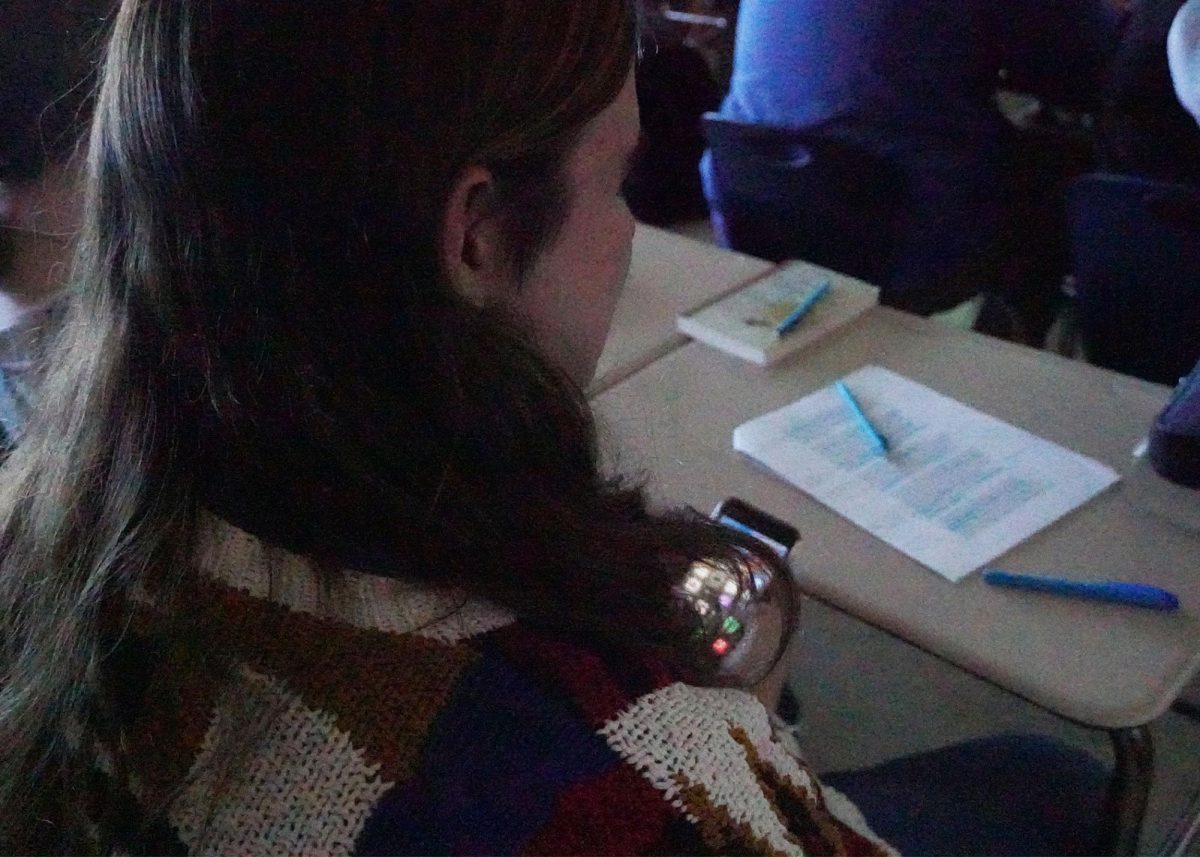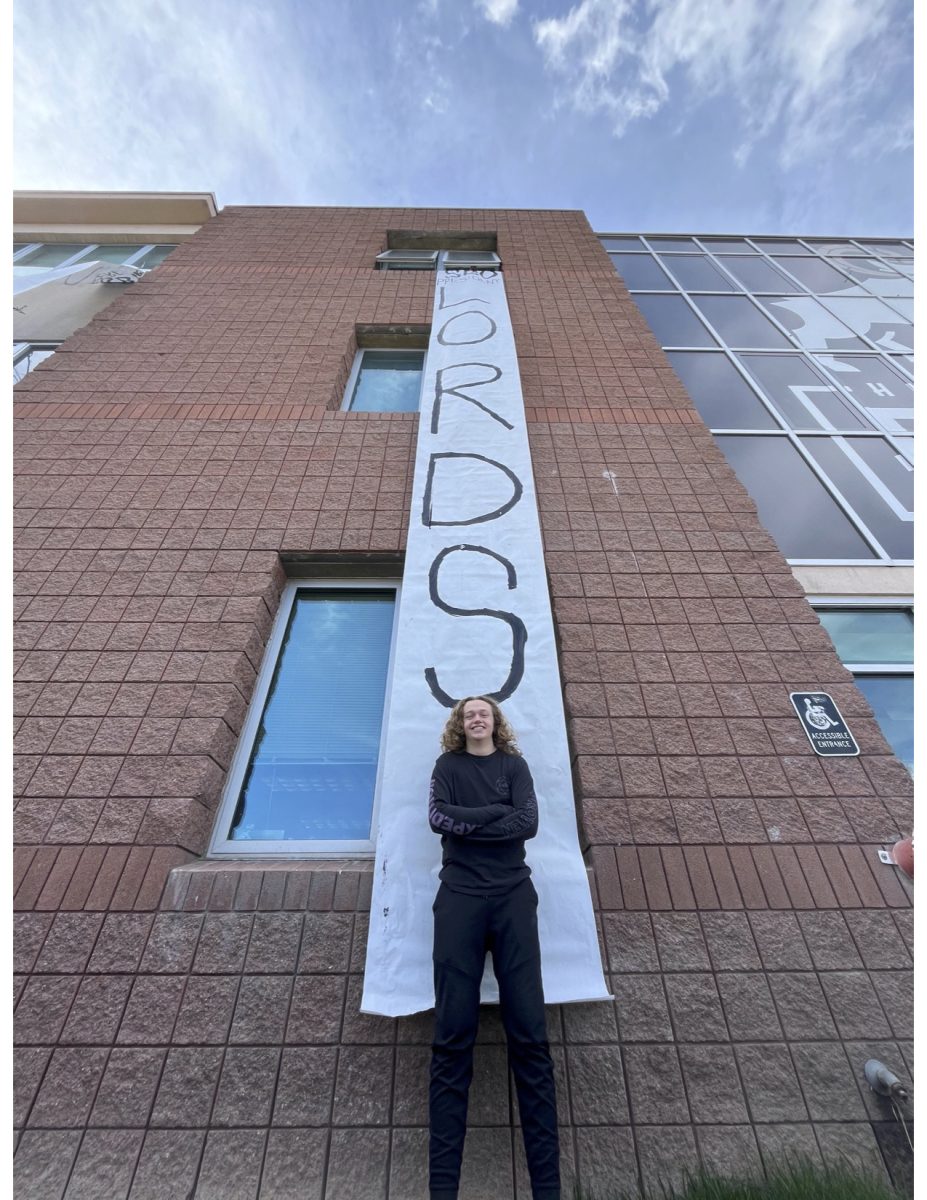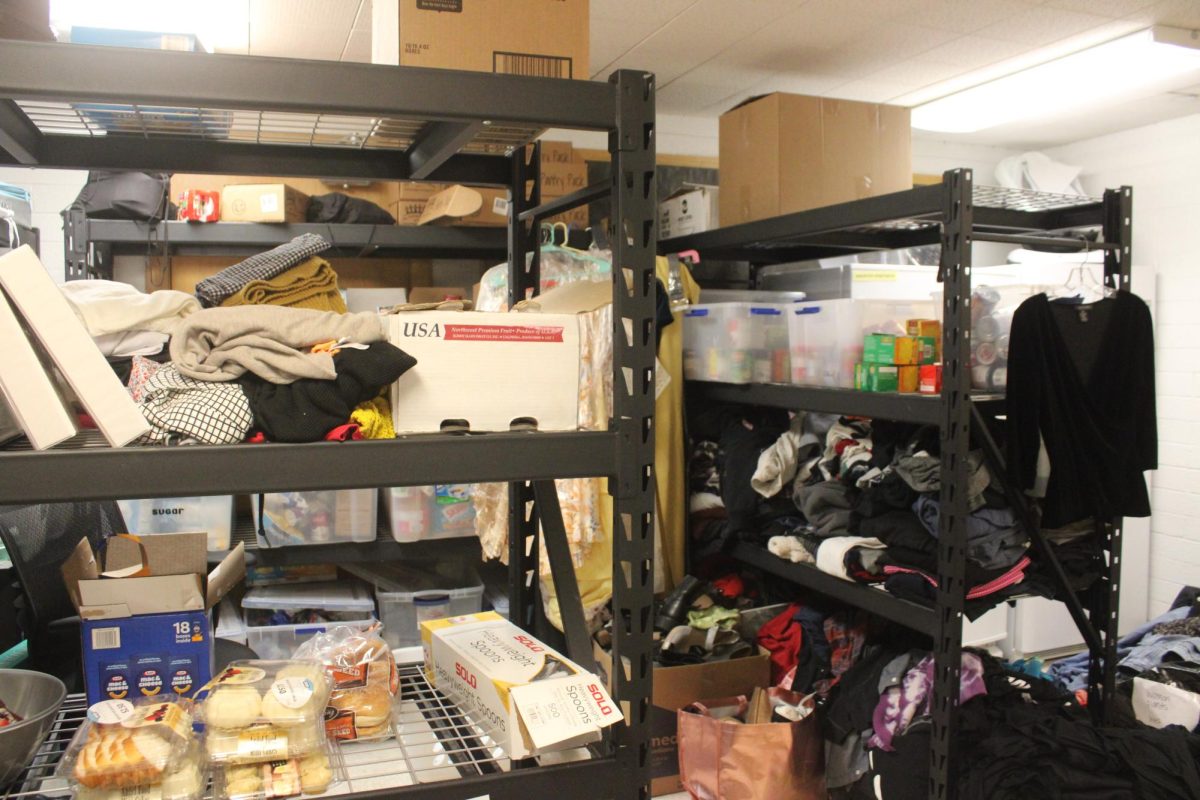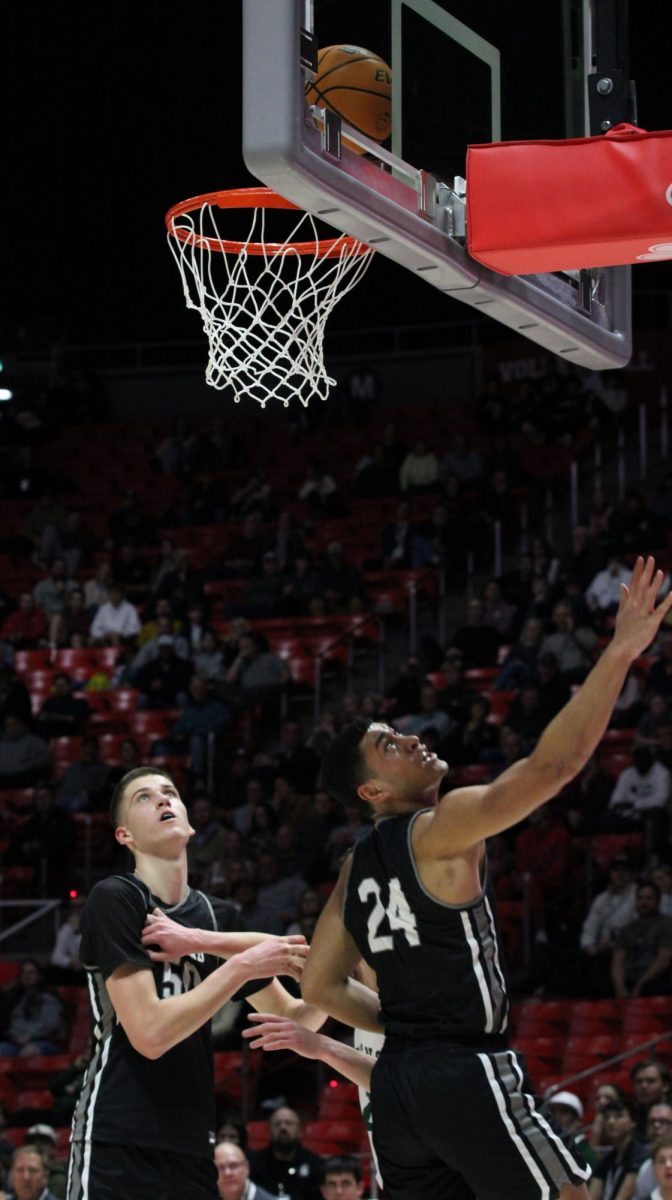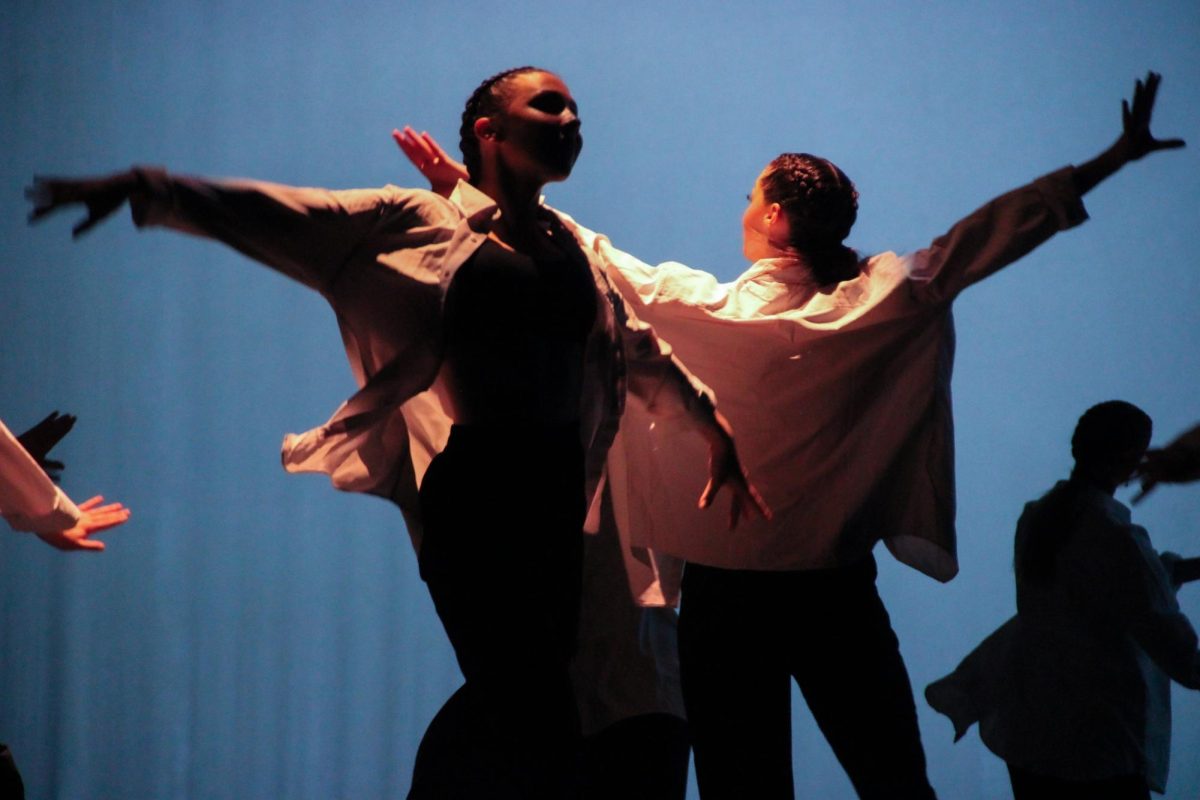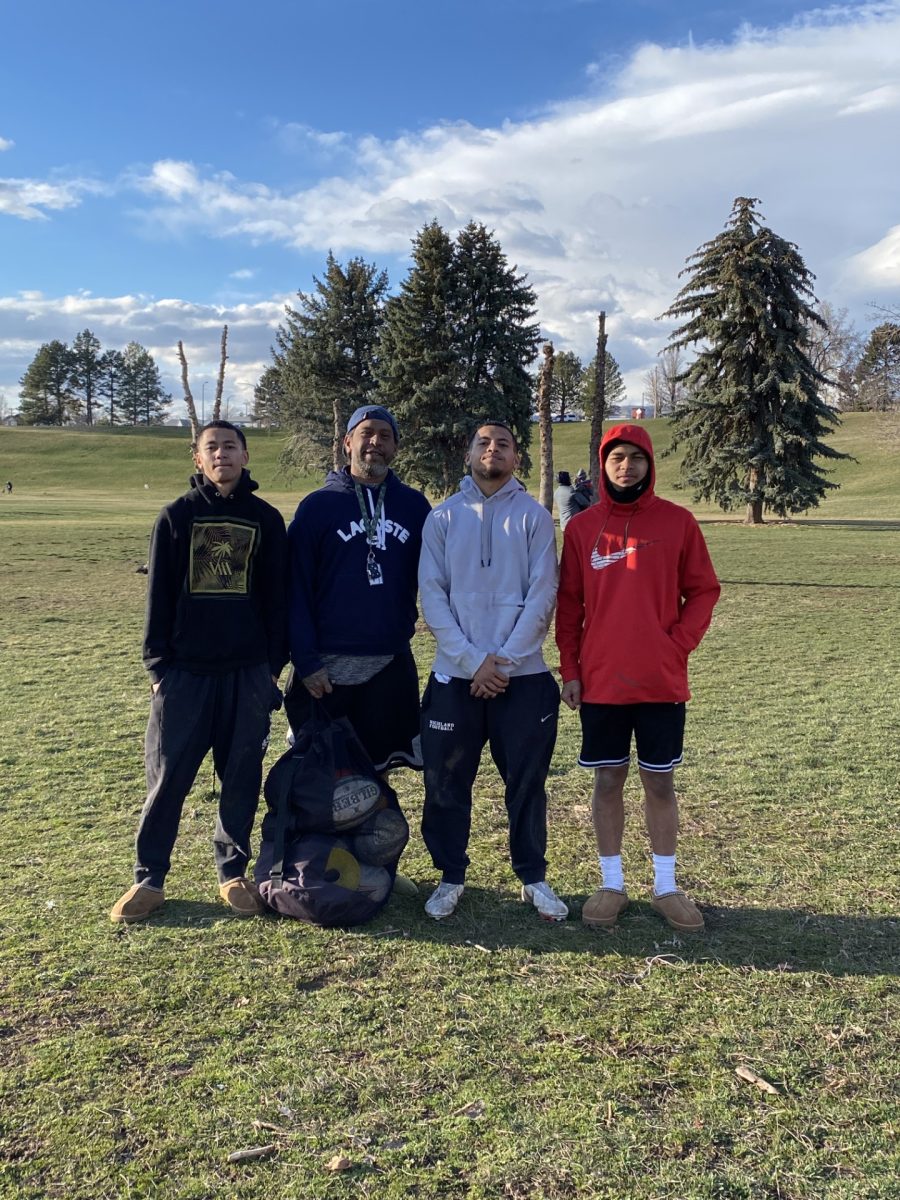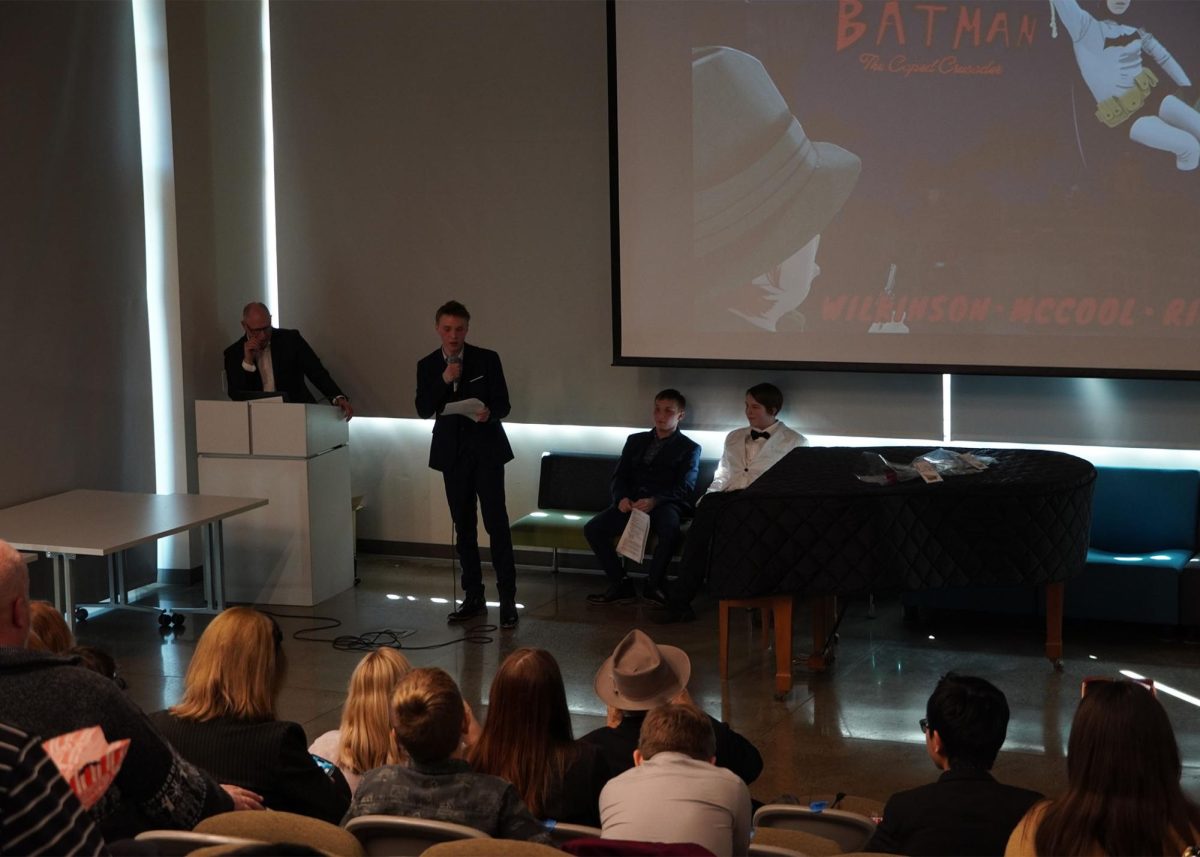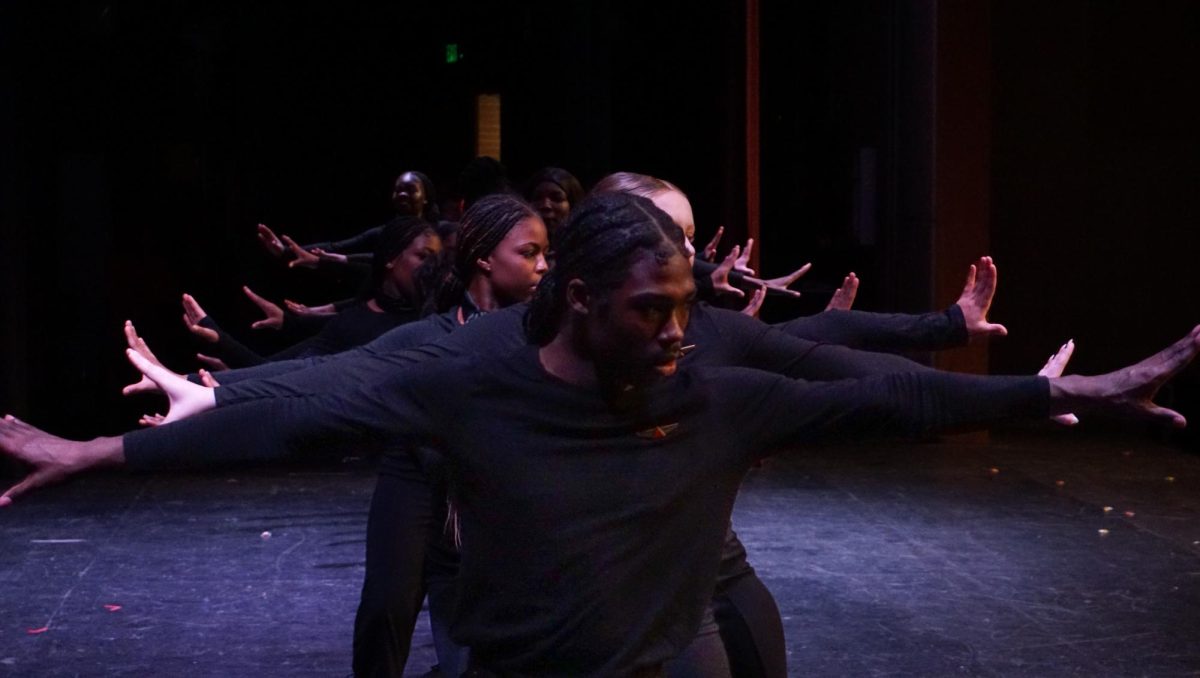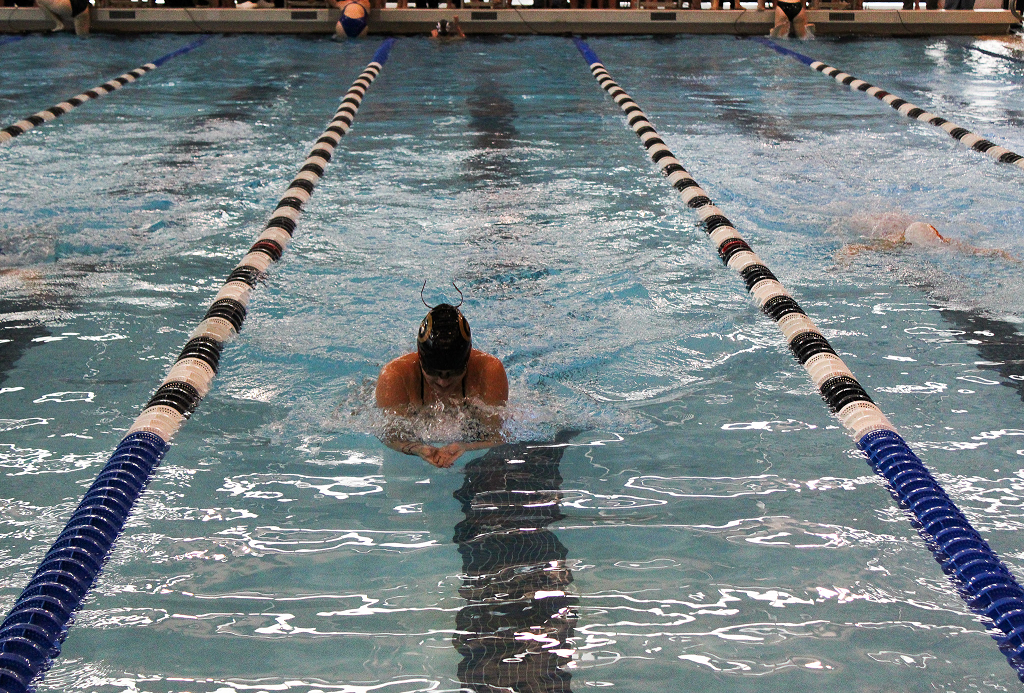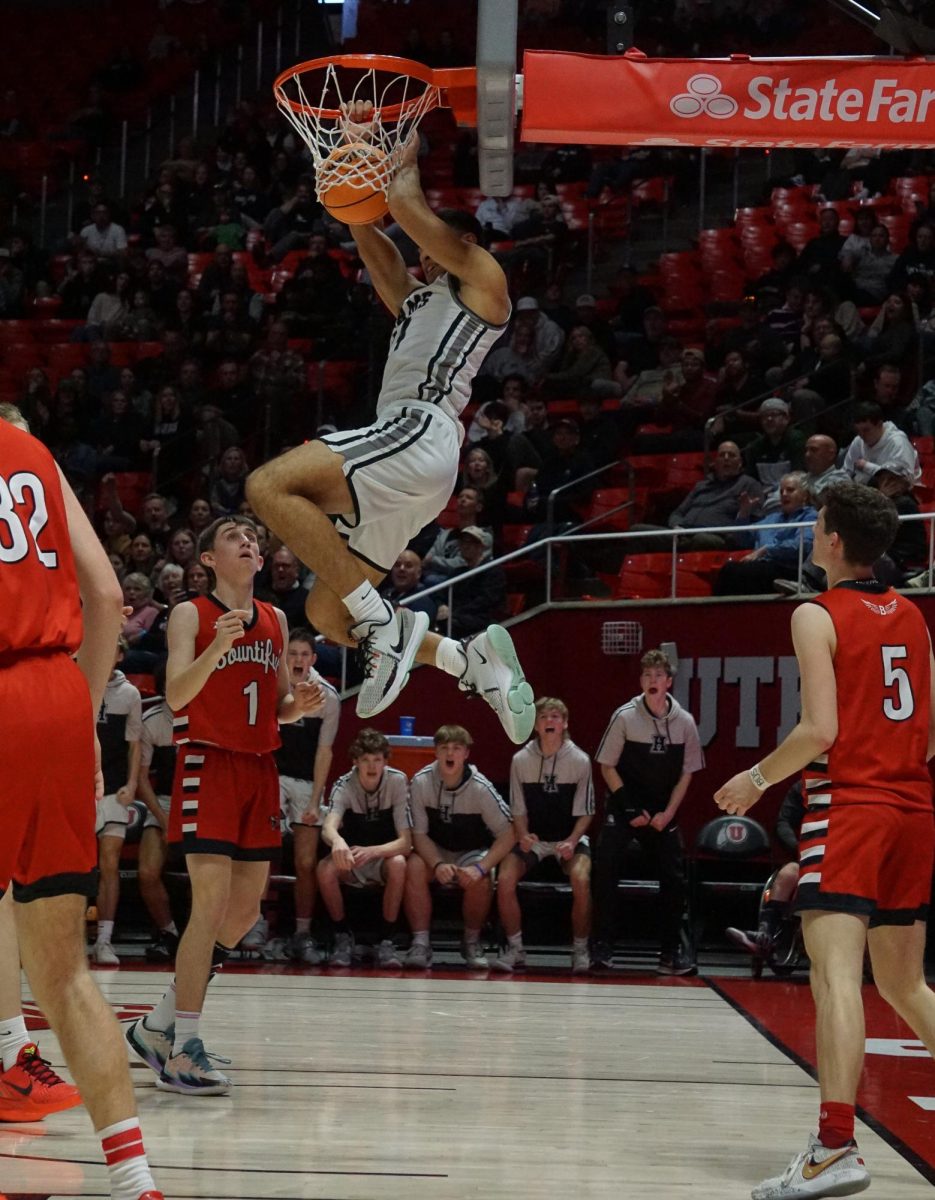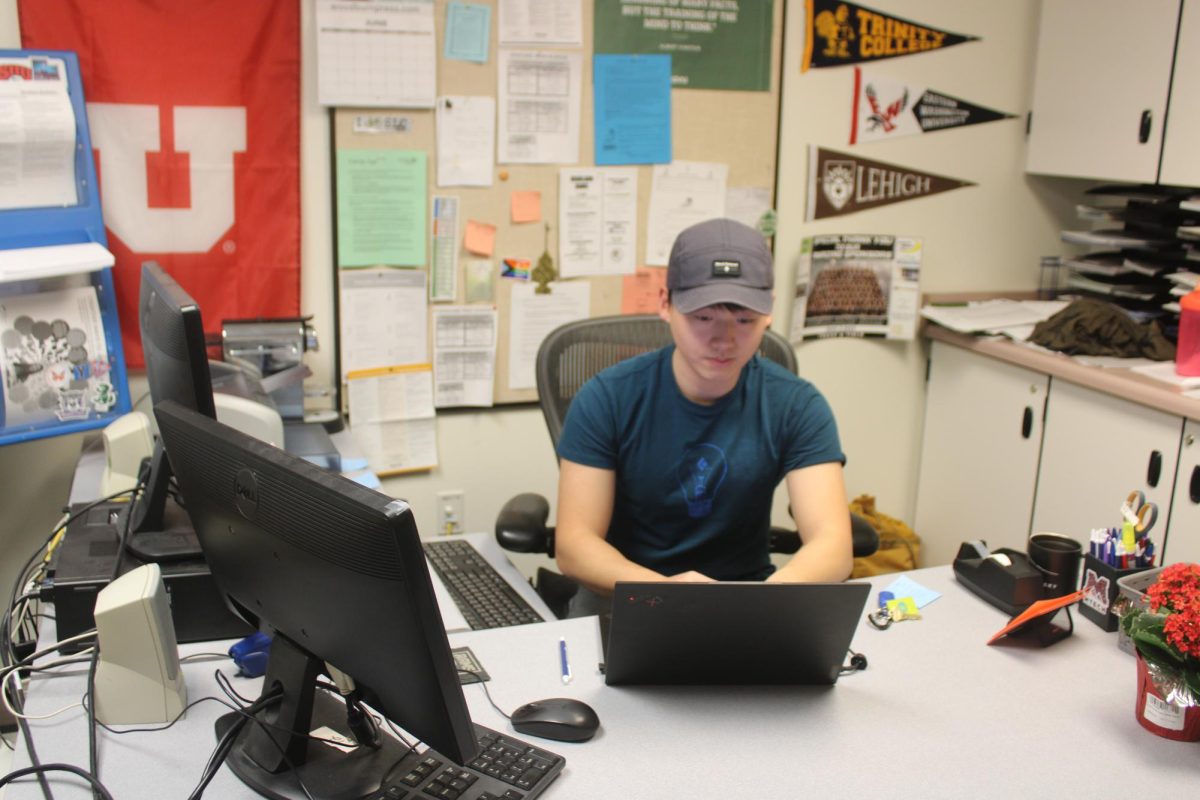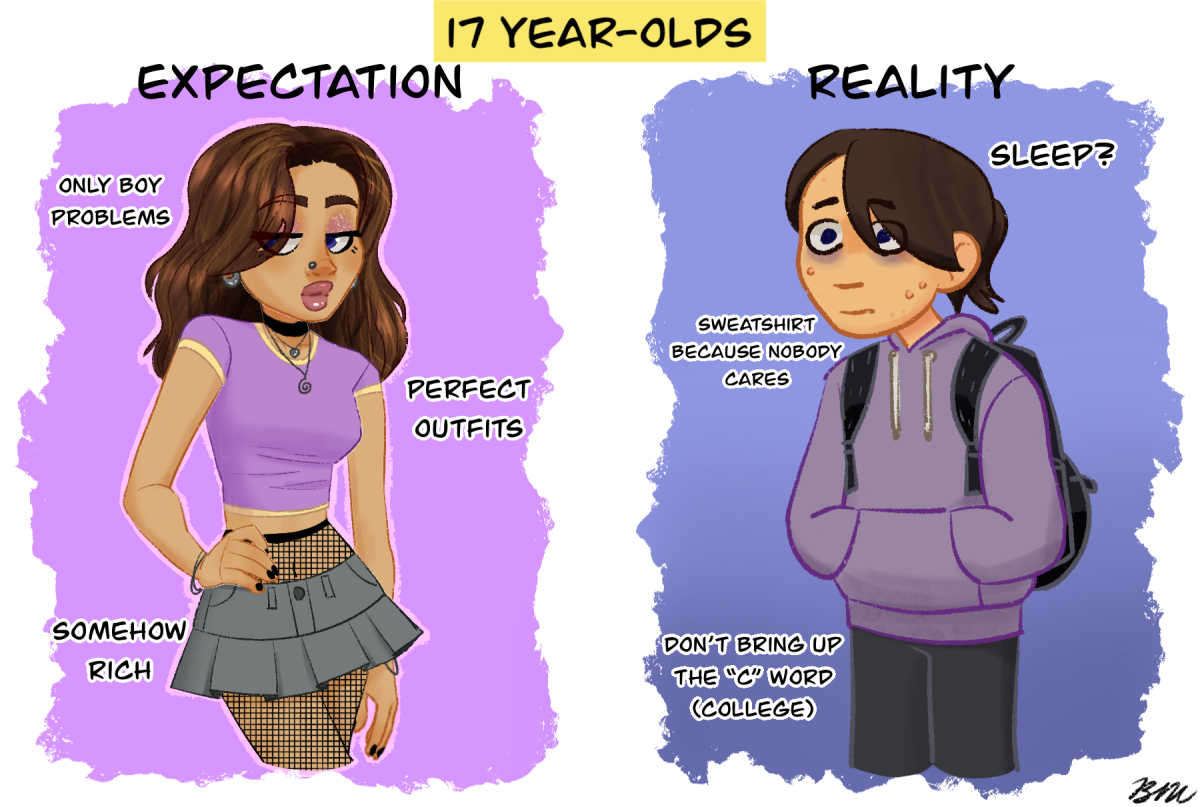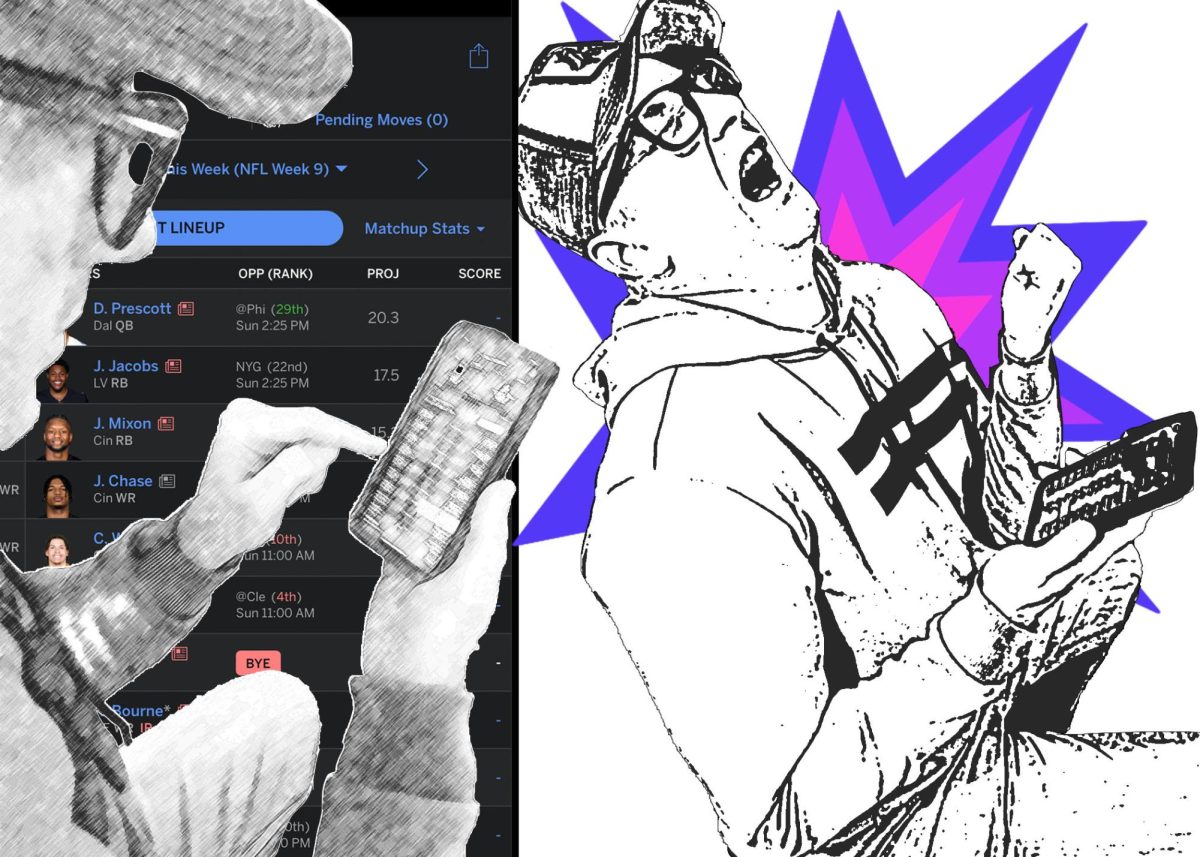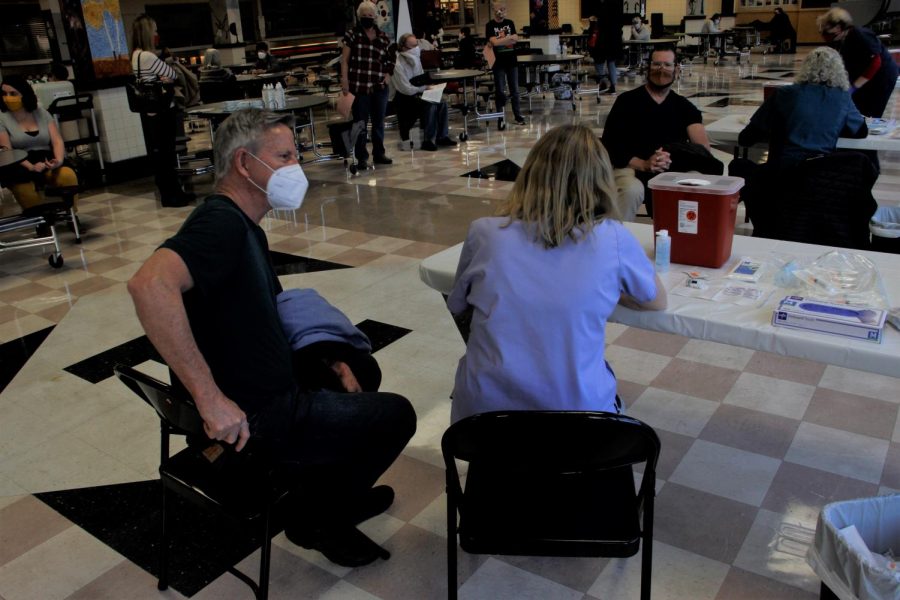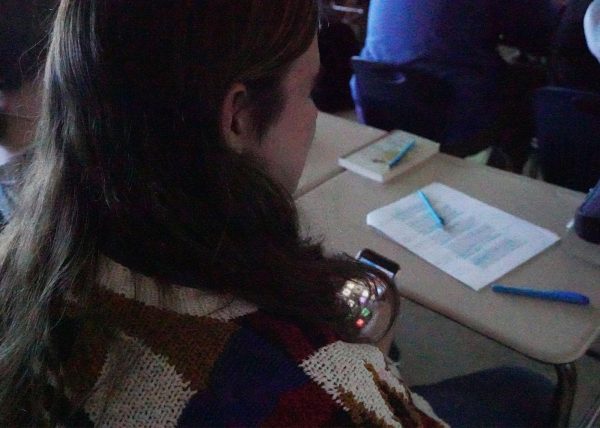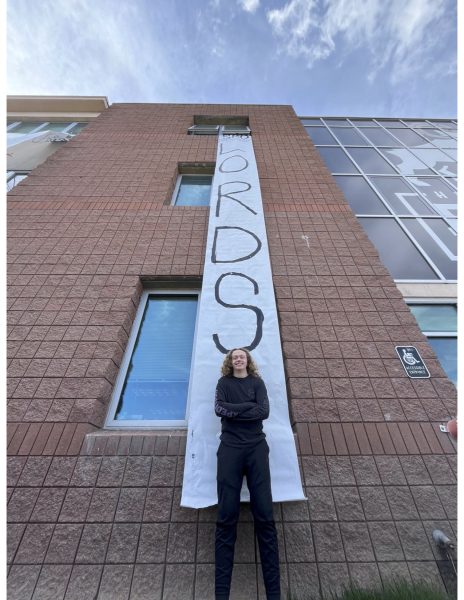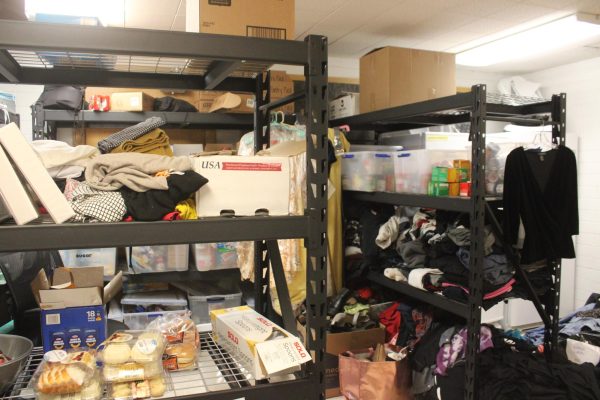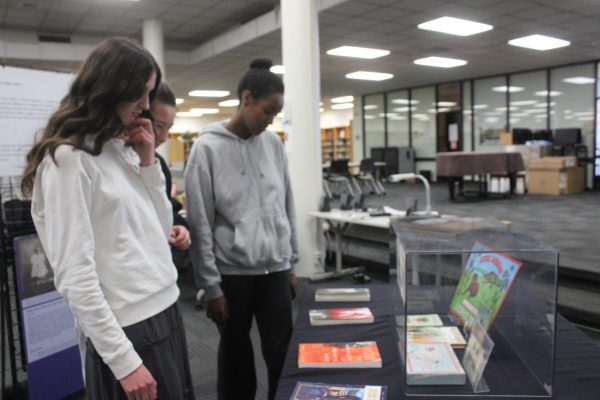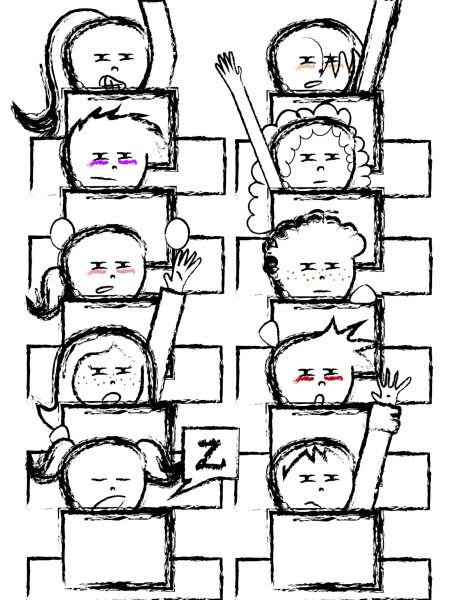Many Teachers Are Concerned About In-Person Learning
Highland teacher Gary Rowles ready to get his first COVID vaccine on Jan. 14.
February 13, 2021
Many at Highland know about the rat problem in our school. It’s gone on for so long that now teachers and students have begun to name them. This infestation is due to the understaffed custodian team. They do what they can, but are unable to make sure everything is cleaned every day. The understaffing has yet to be resolved, and with it, the all important question: if we can’t even get rid of a rat infestation, how will the school be sanitary and safe enough to return to with a global pandemic still raging? We are in the middle of a global pandemic, Utah is ranked #43 in states that are ready to reopen, and cases of COVID haven’t been slowing down enough. Even with all of this, we are still opening schools.
Some people want in-person school, some don’t. Parents, students, the school board, and the Utah legislature have stated their opinion loud and clear. A decision has even been made, students are going back to in-person school on February eighth, two days a week, while teachers will be in the building four days a week. Despite their best efforts, there is one group who has been mostly pushed aside and ignored: the teachers.
Teachers, just like everyone else, think that COVID has been hard for many, and want to go back to the old “normal.” Many received their first round of the vaccine in the last week, and will feel safe enough to go back once it is in full effect.
Except, that won’t happen. February eighth was the originally proposed date to go back to in-person school as teachers’ vaccines would have time to fully work. This plan fell through, however, as there was a shortage of vaccines in Utah. Now, if we were to wait for these vaccines to be in full effect for teachers, we would be able to go back just a week or two later. The school board is instead pushing it earlier by a couple of weeks after buckling under political pressure.
Teachers will be required to be in the classroom if students are present, even those that are high risk. This puts many of the teachers in our district in danger, all because our district is refusing to wait a week.
“I will go back vaccinated, but students will not. (The COVID vaccine is not approved for those under [16-18], and the state does not have plans to vaccinate kids right now.) I am concerned that there will be a COVID spread in the student population who will then take it home and possibly infect people in their households. The Glendale neighborhood, from which we have many students, has one of the highest positivity rates in the state. I believe it would be much safer to stay online, vaccine or not,” Jennifer Jacobson, a teacher at Highland, said. “While not ideal, online school has been effective in my classes. I know three people who have died of COVID, including my best friend’s mother. COVID is real. Listening to people push for teachers and students to return to face to face school in the presence of increasing COVID numbers and deaths is frustrating. I have heard people say that teachers are “selfish” and “lazy” for wanting to remain online. It has been demoralizing to hear people speak so disparagingly about teachers and our desire to remain safe. Teachers go into the profession because they love to work with students. Teachers want what is best for students, not just academically, but in their lives. I love the Ram Fam, I want to see my students, but more than anything, I want people to be safe. Online school provides a safe secondary environment, especially at a time that we see spikes in COVID numbers.”
Misinformation has spread about COVID and the vaccine, so here are the facts. You receive two doses of the vaccine, the second is to be administered 21-28 days after the first (depending on which vaccine), and seven days after the second dose a person should be 95% immune. If one were to contract the virus after the vaccination process, it would be a very mild case or asymptomatic. A number of teachers received the first dose on January 14, which means the second dose should be administered February fourth-eleventh, and that means teachers should be largely immune by February 11-18. Delaying by just a week or two would ensure teachers are safe. But while most teachers want to go back to school as soon as it’s safe, there are a few who are very opposed.
“300,000+ Americans have died. This is not the flu. We don’t go to the gym. We don’t dine indoors. We had Thanksgiving alone. Teaching online is safer. The vaccine is not approved for people under [16-18]. My students would still run the risk of getting sick and bringing the virus home to at-risk family members. That concerns me,” Creed Archibald, a teacher at Highland, said. “If the student body is not vaccinated, there will still be outbreaks. I do not want to deal with the whiplash of opening and closing abruptly like Granite and Canyons districts. All teachers know that consistency is important. I’d rather be consistently online than back-and-forth.”
One must only look as far as neighboring school districts to see how true this is. They have fallen into the cycle of in-person schooling, which leads to an outbreak, school moves online for two weeks, and then it begins again. The lack of consistency has created a more stressful and uncertain environment for students in a world and time when things are already stressful and uncertain.
While teachers want to go back to in-person school, they want it to be safe and many believe that staying online for the year is better than the ever changing schedule of other districts. They have worked tirelessly to give the students the best education possible under these unprecedented circumstances.
Most teachers struggled in the beginning as they were not used to teaching online, lessons that worked well in-person failed over Zoom, they couldn’t see cues that students were or weren’t understanding the information, and many other difficulties. But it turns out that you can teach an old dog new tricks, it just takes time, and teachers are adapting well to online teaching. Teachers have worked harder than ever this year to help students, learn a new way of teaching, and deal with everything going on in the world at the same time. It is because of their hard work and dedication that the amount of students and parents giving up is so frustrating.
“The local media has given a lot of attention lately to the students who are failing and falling behind this year. Of course, I am concerned about those students. I’ve spent countless hours calling, emailing, and meeting with those families. However, I think it’s worth mentioning that about 80% of Highland students have risen to the challenge and made the most of this difficult situation. I’m proud of our student body. Some kids are even working jobs and caring for younger siblings while managing their own schoolwork, which is so impressive,” Archibald said. “I’ve heard some parents say, “Online school just doesn’t work for my kid.” While there are exceptions, generally speaking, this is a harmful and defeatist mindset. Millions of American adults, myself included, had to start working online during this pandemic. If I said, “Online teaching doesn’t work for me” and gave up, I’d be fired. I recognize that this is difficult for teens, but it’s also an opportunity to show some grit and creativity. Most Highland students have done that, and I commend them for it.”
There is no perfect solution in these strange times. We can only hope that decisions will be made with everyone’s safety in mind, with the best information available.
